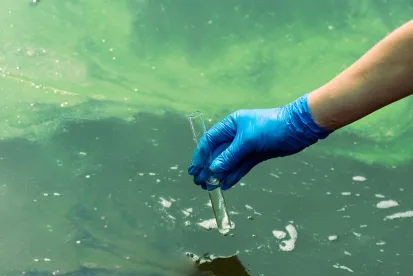Today the U.S. Environmental Protection Agency (EPA) issued a pre-publication version of its highly anticipated proposed National Primary Drinking Water Regulation (NPDWR) for certain PFAS that, if promulgated as proposed, would set Maximum Contaminant Levels (MCL) for six PFAS substances: perfluorooctanoic acid (PFOA), perfluorooctane sulfonic acid (PFOS), perfluorohexane sulfonic acid (PFHxS), hexafluoroprophylene oxide dimer acid and its ammonium salt (GenX), perfluorononanoic acid (PFNA), and perfluorobutane sulfonic acid (PFBS). This nearly 400 page proposed rule will be published in the Federal Register shortly. In addition to the pre-publication version of the rule, EPA released a number of technical documents supporting the rule, and the economic analysis required by the Safe Drinking Water Act. Find those documents here.
EPA proposes to set a non-enforceable Maximum Contaminant Level Goal (MCLG) for PFOA and PFOS at zero. The MCLs, which must consider feasibility, including technical and cost considerations, are set at 4.0 parts per trillion (ppt) for PFOA and PFOS, individually. EPA indicated that 4.0 ppt is the lowest level of PFOA or PFOS that currently approved analytical methods can reliably quantify.
EPA proposes to use a different approach for PFHxS, GenX, PFNA, and PFBS. For those substances, EPA proposes to set the MCL (combined) at a Hazard Index (HI) of 1 (unitless). This is a novel approach that EPA has not used previously in establishing NPDWRs. EPA has identified the following Health Based Water Concentrations (HBWC) for these chemicals:
-
PFHxS, 9.0 ppt
-
GenX, 10.0 ppt
-
PFNA, 10.0 ppt
-
PFBS, 2000 ppt
These HBWCs are used as an input to calculate the hazard index for particular sampling results. EPA indicated it will make a web-based form available to water providers subject to the rule that automatically calculates the hazard index based on sampling results.
The proposed rule would apply to public water systems classified as Community Water Systems, such as public water authorities and private water companies, and Non-Transient Non-Community Water Systems, such as schools, universities, and factories. Transient Non-Community Water Systems, such as gas stations or shopping malls, would not be subject to the proposed rule if finalized.
EPA proposes that public water systems that utilize surface water and public water systems that serve more than 10,000 and utilize groundwater will be required to monitor for regulated PFAS quarterly, after the rule’s effective date, and smaller groundwater based systems will be required to monitor twice each year. Based on initial results, this frequency can be reduced if those results are below 1.3 ppt for PFOA and PFOS and 0.33 ppt for PFAS regulated by the Hazard Index.
If a public water system detects any of the above PFAS above the established MCL, the public water system is required to take certain actions to reduce or eliminate the subject PFAS in the drinking water supply.
Comments on the proposed rule are due in May 2023, 60 days after official publication of the proposed rule in the Federal Register.






 />i
/>i
